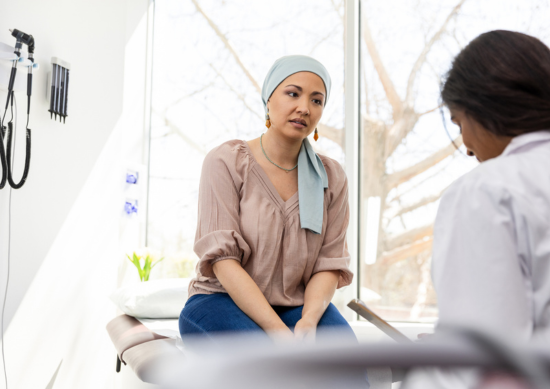
Supportive oncodermatology is a specialty of dermatology that focuses on managing skin, hair and nail side effects in cancer patients undergoing treatment.
"We mostly see patients with rashes from their treatment, whether it’s chemotherapy or other medicines. We often see graft-versus-host-disease in stem cell transplant recipients and we frequently care for nail problems," says dermatologist Jesse Hirner, MD, who joined the Nebraska Medicine oncodermatology team after a fellowship at the Dana-Farber Cancer Institute, the third largest cancer center in the U.S.
Evolution of the field
Recent advancements in precision medicine have transformed dermatologic care for cancer patients, creating a specialized field at the intersection of oncology and dermatology.
"Cancer treatment has changed dramatically over the last 10 to 15 years because of a better understanding of the human genome and cancer genetics," Dr. Hirner says. "Improved ability of pharmaceutical companies to generate molecules that target specific molecular and genetic features of cancer has led to an explosion of different cancer drugs on the market. Many of these cause unique side effects in the skin."
This trend mirrors developments in other areas of supportive oncology care, such as cardio-oncology and hepato-oncology, all stemming from the Human Genome Project's impact on precision medicine and the development of immunotherapy.
Benefits for patients
Supportive oncodermatology addresses two critical needs for cancer patients:
- Treatment continuity: Helping patients stay on their cancer treatments by managing side effects.
- Quality of life improvement: Reducing discomfort and cosmetic concerns.
"Skin side effects, and less commonly hair and nail issues, can cause patients to discontinue their cancer treatment," Dr. Hirner says. "Even if side effects don't lead to treatment discontinuation, they often significantly impair quality of life."
The good news: The oncodermatology team can improve or completely resolve skin side effects, allowing patients to continue their cancer treatments. In some cases, temporary treatment holds combined with preventative care strategies allow patients to resume therapy with reduced side effects.
Common conditions and treatments
The most frequently encountered conditions include:
- Immunotherapy-related rashes: These present in various forms and may resolve with steroid creams.
- Graft versus host disease: Common in stem-cell transplant recipients.
- Nail problems: Including nail loss, in patients receiving taxane chemotherapy.
- Hair issues: Primarily those not routinely managed by oncologists.
For some patients, reassurance about the temporary nature of their skin reactions offers significant peace of mind. The expertise of dermatologists is particularly valuable for oncologists who may not frequently prescribe certain immunotherapies or for those managing unusual reactions.
The oncodermatology team also offers preventative care for patients on certain medications known to cause skin reactions.
"EGFR inhibitors and some other medications cause skin side effects in 90-plus percent of patients. We have good tools to prevent these reactions," Dr. Hirner says. "If oncologists are considering referring for preventative care, we'd be more than happy to see these patients."
Case example: Bullous pemphigoid
Dr. Hirner shares a case that highlights the impact of oncodermatology intervention:
One scenario we see commonly is bullous pemphigoid. These patients have various cancers and receive immunotherapy, which can cause antibodies that make the skin layers separate. This leads to large blisters on not only on the skin but often in the mouth and throat, creating problems with eating and drinking. As these blisters break open, large portions of body surface become denuded, causing discomfort, impairing quality of life and presenting infection risks. Oncologists invariably stop immunotherapy in these cases, which may impact cancer response.
With appropriate treatment, these patients typically experience rapid and complete resolution of symptoms, allowing them to resume immunotherapy and restore normal eating and drinking functions.
Collaborative care model
The Nebraska Medicine supportive oncodermatology program leverages the strengths of a comprehensive cancer center with multiple supportive care specialists working in coordination.
"One of the advantages of Nebraska Medicine is that we have many supportive care specialists doing exactly what I'm doing, but for neurology, cardiology, endocrinology, etc. This level of specialized care isn't available outside large cancer centers," Dr. Hirner says.
The integrated medical record system and ease of communication between specialists allow for coordinated care.
When to refer
Dr. Hirner encourages providers to refer patients promptly if they're experiencing dermatologic side effects from cancer treatment.
"If you're thinking about referring, don't hesitate,” he says. “We're happy to help and make every effort to see these patients quickly.”